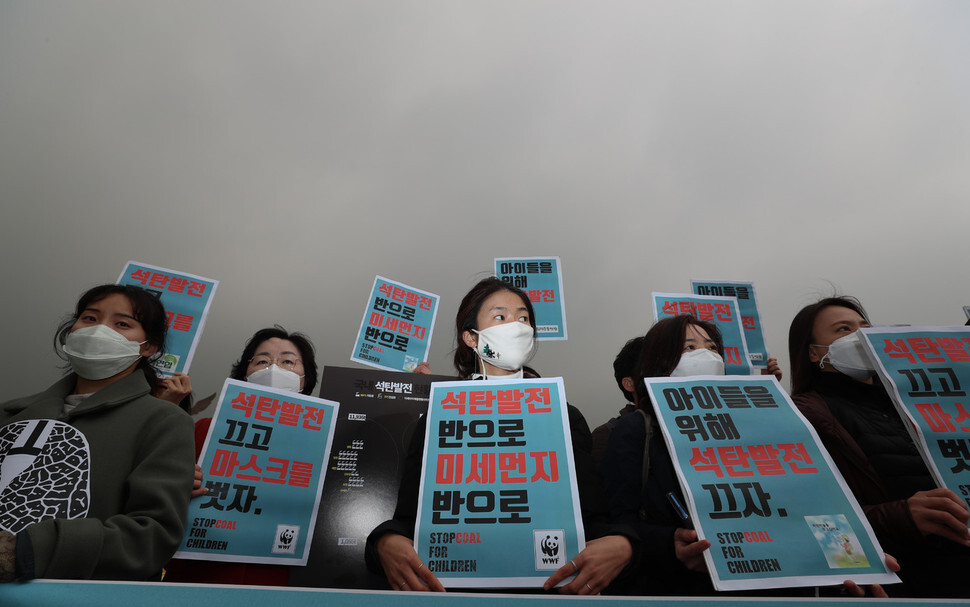Posted on : Dec.12,2019 17:12 KST
 |
|
Environmental civic groups call for a reduction in South Korea’s reliance on coal power in front of the Blue House on Dec. 3. (Kim Jung-hyo, staff photographer)
|
Coal-fired power reduction measures implemented to reduce fine particle pollution during winter
 |
|
Environmental civic groups call for a reduction in South Korea’s reliance on coal power in front of the Blue House on Dec. 3. (Kim Jung-hyo, staff photographer)
|
The amount of fine particle pollution emitted from coal-fired power plants is down by roughly half from 2018 levels amid coal reduction measures implemented this December to cut back on the increase in fine particle emissions during winter.
The Ministry of Trade, Industry and Energy (MOTIE) announced on Dec. 11 that after beginning its coal-fired power reduction measures at midnight on Dec. 1 by halting operations of 12 generators and imposing a maximum of 45 generators (80% of generation output) for a period of one week, fine particle emissions were down by around 45.8% (187 tons) from the same period in 2018 -- an equivalent effect to suspending the operation of 16 to 21 generators a day. The electricity reserve rate was preserved at the “stable” level of 13.1-17.3% over the same period, MOTIE explained.
At a governance issue review and coordination meeting on Nov. 28, the South Korean government finalized winter electricity supply and coal-fired power reduction measures, announcing that it would “pursue the maximum possible reduction of coal-based power while maintaining stable electricity supplies.” To achieve this, it made plans for a first-ever ongoing winter suspension of operations of 8 to 15 coal-fired generators.
MOTIE is also working with civic groups on a campaign to reduce energy consumption in 20 regions throughout the country to beef up its management of energy demands during the winter. Together with local governments, it plans to conduct two-week focused reviews each month with appropriate heating temperatures for public institutions (maximum of 18 degrees) and high-consumption private structures (20 degrees). MOTIE also plans to crack down on businesses that operate heating with their doors or windows open in 18 major commercial zones during the anticipated peak period of power consumption, the fourth week of January in 2020.
By Kim Eun-hyung, staff reporter
Please direct comments or questions to [english@hani.co.kr]










